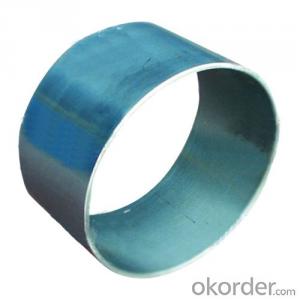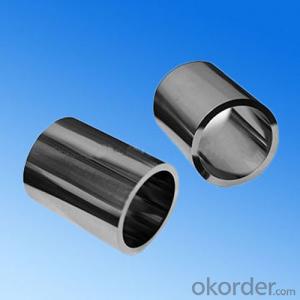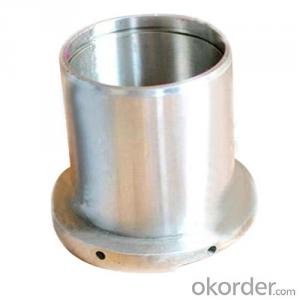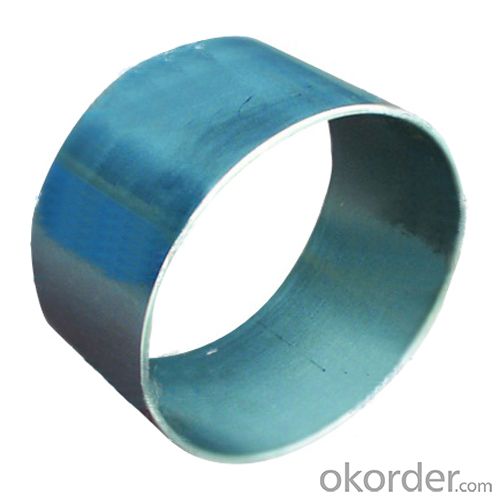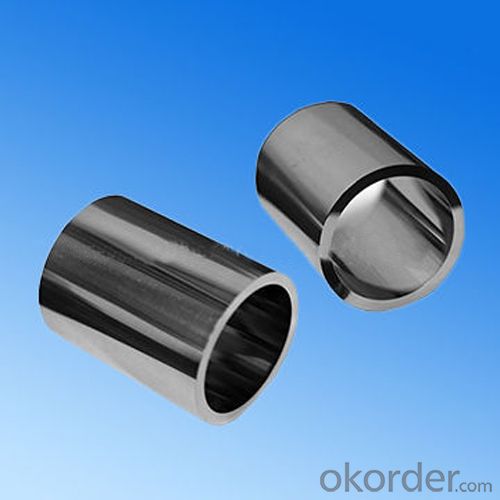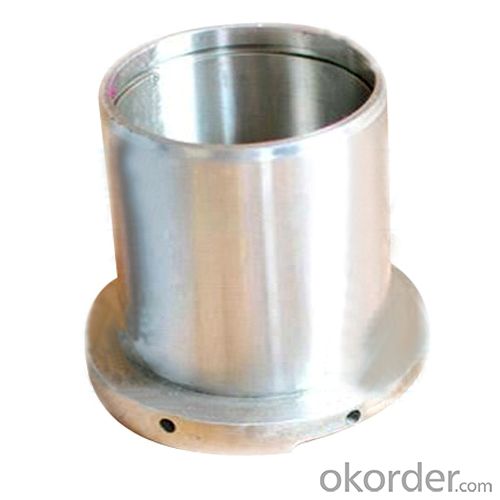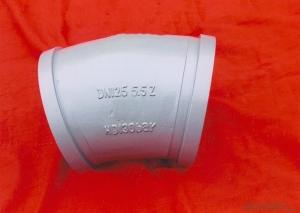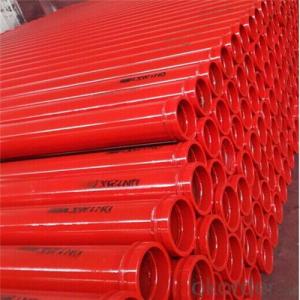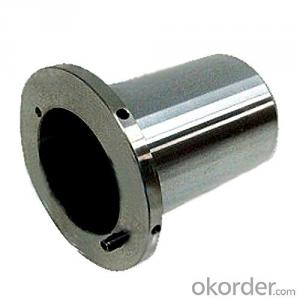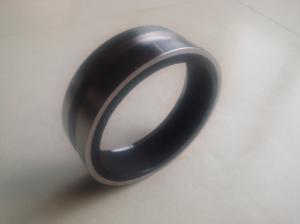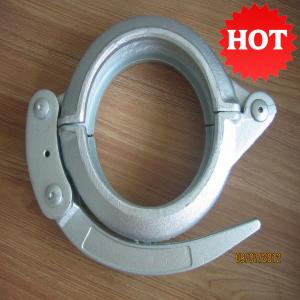Wear Sleeve PM II Concrete Pump Parts High Quality
- Loading Port:
- Shanghai
- Payment Terms:
- TT OR LC
- Min Order Qty:
- 1 pc
- Supply Capability:
- 1000 pc/month
OKorder Service Pledge
OKorder Financial Service
You Might Also Like
Product information:
Wear Sleeve is the basic material among the frictional materials
They are widely used as the basic components for sealing
And the Wear Sleeve are widely adopted in petrochemical
industry due to its excellent performances such as wear ability, anti corrosion
Wear Sleeve is widely known for its durability and quality
It can withstand high pressure and is resistant to corrosion, so is used in water pumps, oil pumps and various other pumps
Today, Wear Sleeve has been playing an important role in the field of long working parts material
Applications:
Wear Sleeve is often used in concrete pumps.
Main Product Features:
· Premium quality
· Prompt delivery & seaworthy packing (5-10 days)
Reliable performance
Easy to weld
High safety.
· Professional Service
· Competitive pricing
Measuring of wall thickness from the outside
Low purchase cost
Measuring of wall thickness from the outside
Low purchase cost
About our service:
OEM and ODM orders are welcome
Customized design is available
Reply your enquiry in 24 working hours
Experienced staffs will answer to all your questions in fluent English
Payment terms: we accept T/T, L/C, PayPal, Western Union, Escrow
FAQ:
Q1: How long about delivery time?
A1: Normally we keep the raw materials for old customers and sometime we also keep stock products to make sure delivery time in any emergency cases.
Q2: How do we guarantee the quality of our pipes?
A2: We have established an advanced quality management system which conducts strict quality tests at every step, from raw materials to the final product. At the same time, we provide extensive follow-up service assurances as required.
Q3: How soon can we receive the product after purchase?
A3: Within three days of placing an order, we will book the vessel for goods. The specific shipping date is dependent upon international and government factors, but is typically 7 to 30 workdays.
Q4: If we can produce some pipes according to customers request?
A4: Yes, we can produce Concrete Placing Boom according to the difference country situations to make it suitable to the market and customers. We have very professional technical team to make the design.
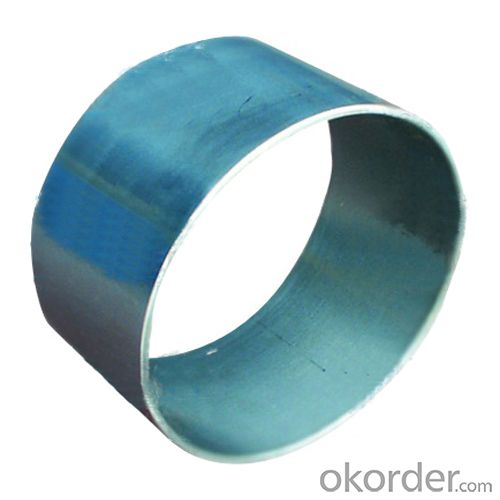
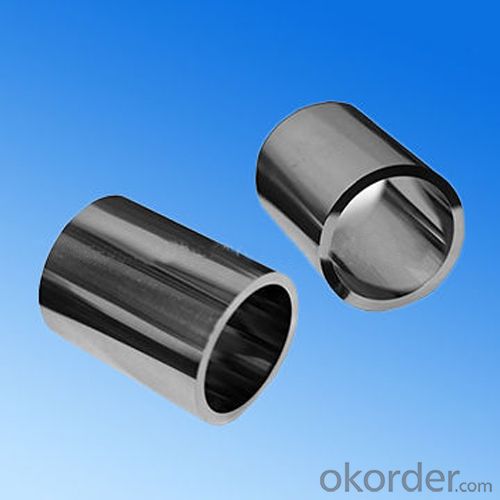
- Q: How can a malfunctioning remote control affect the pumping operation?
- The pumping operation can be significantly affected in multiple ways by a malfunctioning remote control. Initially, operators utilize the remote control to operate the pump from a distance, enabling them to control crucial settings such as speed and direction. If the remote control malfunctions, it can hinder operators' ability to effectively control the pump, resulting in delays or inefficiencies in the operation. Furthermore, a malfunctioning remote control can lead to inconsistent or erratic commands being sent to the pump. This instability in commands can cause fluctuation in flow rates, pressure, or other critical parameters, thereby impacting the overall efficiency and effectiveness of the pumping operation. Moreover, there are safety risks associated with a malfunctioning remote control. If the remote control fails to transmit accurate commands, it may cause the pump to operate at undesired speeds or pressures, potentially leading to equipment damage or accidents. Additionally, during emergencies or hazardous situations, the inability to control the pump remotely can hinder operators' prompt response and risk mitigation. Additionally, a malfunctioning remote control can disrupt the monitoring and control systems linked to the pumping operation. Remote controls are often integrated with centralized monitoring systems that provide real-time data and alerts to operators. If the remote control fails, it can interrupt the flow of critical information, making it challenging for operators to monitor the pump's performance, identify issues, or make informed decisions. To conclude, the malfunctioning of a remote control can adversely affect the pumping operation by impeding remote control functionality, causing erratic pump performance, posing safety risks, and hindering monitoring and control systems. Therefore, it is essential to regularly inspect and maintain remote controls to ensure their proper functionality and minimize any potential disruptions to the pumping operation.
- Q: What are the skills of concrete pump?
- According to the characteristics of the construction site and concrete pouring plan piping, piping design to check the level of the pipeline, conversion distance and the concrete pump pumping distance to adapt
- Q: Are there any specific guidelines for the transportation of concrete pump spare parts?
- Concrete pump spare parts have specific guidelines for transportation to ensure their safe arrival and immediate usability. Consider the following key guidelines: 1. Packaging: Adequate packaging is necessary to prevent damage during transportation. This may involve using sturdy boxes, crates, or pallets to protect parts from impacts and vibrations. 2. Labeling: Clearly label each package with its contents, including the specific part name and number. This facilitates easy identification and prevents confusion during transportation. 3. Handling: Handle spare parts with care to avoid mishandling or dropping, which could cause damage. It is recommended to use proper lifting equipment and follow safe handling practices to prevent excessive stress or force. 4. Securing: Properly secure packages to prevent movement or shifting during transportation. This can be achieved by using strapping, shrink-wrapping, or other suitable methods to keep packages in place. 5. Temperature control: If spare parts are temperature-sensitive, ensure proper temperature control during transportation. Extreme temperature variations can damage certain parts, so it's important to protect them accordingly. 6. Transportation mode: Select suitable transportation modes based on the size and weight of spare parts. For larger parts, flatbed trucks or specialized vehicles may be necessary to accommodate their size and weight. 7. Insurance: It's advisable to have proper insurance coverage for the transportation of concrete pump spare parts. This provides financial protection in case of unforeseen incidents or damages during transit. By adhering to these guidelines, concrete pump spare parts can be transported smoothly and safely, guaranteeing their intact delivery and immediate usability.
- Q: What are the different types of concrete pump control system sensors?
- There are several different types of sensors used in concrete pump control systems to ensure smooth and efficient operation. These sensors are designed to monitor various aspects of the pump's performance and provide real-time feedback to the control system. Some of the common types of sensors used in concrete pump control systems include: 1. Pressure Sensors: These sensors are used to measure the pressure of the concrete being pumped. They are typically installed in the discharge line and help to ensure that the pump is operating within the desired pressure range. Pressure sensors are crucial in preventing over-pressurization and potential damage to the pump or pipeline. 2. Flow Sensors: Flow sensors are employed to measure the flow rate of the concrete. By monitoring the volume of concrete passing through the system per unit of time, these sensors enable the control system to regulate the speed and output of the pump accordingly. Flow sensors help in maintaining a consistent and controlled flow of concrete during pumping operations. 3. Level Sensors: Level sensors are utilized to monitor the level of concrete in the hopper or storage tank. These sensors provide information to the control system about the concrete volume, ensuring that the pump is not running dry or becoming overloaded. By maintaining the appropriate level of concrete in the hopper, level sensors help to prevent pump cavitation or blockages. 4. Proximity Sensors: Proximity sensors are used to detect the position of various moving parts in the pump system, such as the boom or outriggers. They provide feedback to the control system, ensuring that the pump operates safely and avoids any potential collisions or obstructions. Proximity sensors play a crucial role in preventing accidents and protecting both the equipment and personnel. 5. Temperature Sensors: Temperature sensors are employed to monitor the temperature of the concrete mix. These sensors help to ensure that the concrete remains within the desired temperature range during pumping, as extreme temperatures can affect the workability and curing process. By maintaining the optimal concrete temperature, temperature sensors contribute to the quality of the final product. Overall, these sensors work together to provide precise and reliable feedback to the control system, allowing for efficient and safe operation of the concrete pump. By continuously monitoring and adjusting various parameters, the sensors help to optimize pumping performance and enhance the overall productivity of concrete placement projects.
- Q: What are the key factors to consider when purchasing concrete pump spare parts?
- To make the correct choice when buying spare parts for your concrete pump, it is important to take into account several significant factors. These factors include: 1. Quality is of utmost importance as it directly affects the performance and lifespan of your concrete pump. To ensure durability and reliability, opt for spare parts made from high-quality materials and reputable brands. 2. Compatibility is essential, so make sure the spare parts you purchase are suitable for your specific concrete pump model. Check the specifications and consult with experts or the manufacturer to avoid any compatibility issues. 3. Cost-effectiveness should be considered, but it should not be the sole determining factor. Strive to strike a balance between price and quality to ensure long-term value for your investment. 4. Supplier reputation matters, so choose a trustworthy and reputable supplier with a proven track record of providing genuine and high-quality spare parts. Read customer reviews, verify certifications, and consider the supplier's industry experience. 5. Availability and lead time are crucial factors to prevent delays in your construction projects and minimize downtime. Ensure that the spare parts you need are readily available and can be delivered within a reasonable timeframe. 6. Warranty and after-sales support are important considerations. Check if the spare parts come with a warranty or guarantee, and also consider the availability of after-sales support and technical assistance for installation or maintenance queries. 7. Maintenance requirements should be taken into account. Look for spare parts that are easy to install, maintain, and repair as this can save you both time and money in the long run. By considering these key factors, you can make an informed decision and ensure that you purchase the appropriate spare parts for your concrete pump that align with your specific needs and requirements.
- Q: What is the function of a concrete pump hopper filter?
- The function of a concrete pump hopper filter is to prevent large debris and foreign objects from entering the pump system, ensuring smooth and uninterrupted flow of concrete and protecting the pump from potential damage.
- Q: What are some common issues with concrete pump hoses and how can they be prevented?
- Some common issues with concrete pump hoses include hose blockages, hose leaks, and premature hose wear. These issues can be prevented by following proper maintenance and usage practices. 1. Hose Blockages: Concrete pump hoses can become blocked due to hardened concrete or debris. To prevent blockages, it is important to clean the hoses thoroughly after each use. Flushing the hoses with water or using a cleaning sponge ball can help remove any residue or build-up. Additionally, using the correct size and length of hose for the job can minimize the risk of blockages. 2. Hose Leaks: Leaks can occur due to wear and tear, improper connections, or damage to the hose. Regular inspection of the hoses is crucial to identify any signs of leakage. If any leaks are detected, they should be promptly repaired or replaced. Properly connecting and securing the hose fittings can also prevent leaks. 3. Premature Hose Wear: Concrete pump hoses can wear out over time due to factors like abrasion, bending, and exposure to harsh chemicals. To prevent premature wear, it is important to handle the hoses with care and avoid dragging them on rough surfaces. Using protective sleeves or guards can also provide additional protection against abrasion. Regularly inspecting the hoses for signs of wear and replacing them when necessary is essential. 4. Improper Storage: Improper storage of concrete pump hoses can lead to damage and reduce their lifespan. Hoses should be stored in a clean and dry environment, away from direct sunlight and extreme temperatures. Coiling the hoses properly and avoiding sharp bends or kinks can help maintain their integrity. 5. Incorrect Pressure: Exceeding the recommended pressure limits can cause the hose to burst or fail. It is important to ensure that the concrete pump is operated within the specified pressure range. Regularly inspecting the pressure gauges and monitoring the pumping process can help prevent over-pressurization. By following these preventive measures and conducting regular inspections and maintenance, the common issues associated with concrete pump hoses can be minimized, leading to improved performance and longevity of the hoses.
- Q: What are the advantages of using tungsten carbide components in concrete pump spare parts?
- There are several advantages of using tungsten carbide components in concrete pump spare parts. Firstly, tungsten carbide is an extremely hard and durable material, which ensures longer lifespan and increased wear resistance of the components. This means reduced maintenance and replacement costs in the long run. Additionally, tungsten carbide has excellent corrosion resistance, making it suitable for use in harsh and corrosive environments commonly found in concrete pumping applications. Furthermore, tungsten carbide components offer superior strength and toughness, enabling them to withstand high-pressure and heavy-duty operations without compromising performance. Overall, the use of tungsten carbide in concrete pump spare parts leads to improved efficiency, reliability, and cost-effectiveness in concrete pumping operations.
- Q: Can I get spare parts for concrete pump hydraulic systems?
- It is indeed feasible to acquire spare parts for hydraulic systems of concrete pumps. Numerous manufacturers and suppliers present an extensive selection of spare parts exclusively crafted for concrete pump hydraulic systems. These spare parts encompass hydraulic cylinders, valves, hoses, filters, seals, and other indispensable components. To guarantee compatibility while procuring spare parts, it is crucial to ascertain the precise make and model of the concrete pump hydraulic system. Moreover, it is advisable to obtain spare parts from trustworthy suppliers or manufacturers to assure excellent quality and dependability.
- Q: What are the common causes of overheating in concrete pump spare parts?
- There are several common causes of overheating in concrete pump spare parts. One of the main reasons is improper lubrication. If the moving parts of the pump, such as bearings and pistons, are not properly lubricated, there is increased friction which leads to overheating. It is important to regularly check and maintain the lubrication system to ensure smooth operation and prevent overheating. Another common cause is excessive use or continuous operation without breaks. Concrete pumps are designed to handle a certain workload, and if they are used beyond their capacity or without proper rest periods, the components can overheat. It is crucial to follow the recommended operating guidelines and allow the pump to cool down periodically to prevent overheating. Furthermore, clogged or blocked cooling systems can also contribute to overheating. The cooling system in a concrete pump helps regulate the temperature by circulating coolant around the engine and other important parts. If the cooling system becomes clogged with debris or the coolant level is low, the pump may overheat. Regularly inspecting and cleaning the cooling system, as well as maintaining the appropriate coolant levels, can prevent overheating. Inadequate ventilation is another common cause of overheating. Concrete pumps generate a significant amount of heat during operation, and if the surrounding environment does not allow for proper airflow, the heat cannot dissipate effectively. This can lead to overheating of the spare parts. Ensuring that the pump is operated in well-ventilated areas or using additional cooling measures, such as fans or air conditioning, can help prevent overheating. Lastly, a malfunctioning or damaged pump component can also cause overheating. If a part of the pump, such as the motor or the hydraulic system, is not functioning correctly, it can put additional strain on other components, leading to overheating. Regular maintenance and inspection of the pump's components can help identify and address any potential issues before they cause overheating. Overall, proper lubrication, following operating guidelines, maintaining cooling systems, ensuring adequate ventilation, and regular maintenance are crucial in preventing overheating in concrete pump spare parts.
Send your message to us
Wear Sleeve PM II Concrete Pump Parts High Quality
- Loading Port:
- Shanghai
- Payment Terms:
- TT OR LC
- Min Order Qty:
- 1 pc
- Supply Capability:
- 1000 pc/month
OKorder Service Pledge
OKorder Financial Service
Similar products
Hot products
Hot Searches
Related keywords
